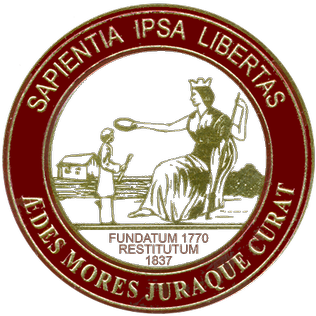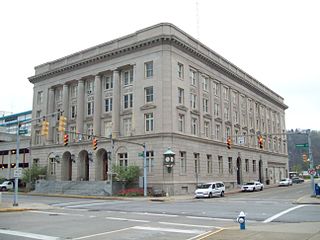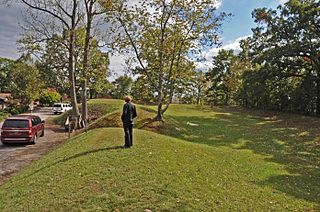
Charleston is the capital and most populous city of West Virginia. Located at the confluence of the Elk and Kanawha rivers, the city had a population of 48,864 at the 2020 census and an estimated population of 48,018 in 2021. The Charleston metropolitan area as a whole had an estimated 255,020 residents in 2021. Charleston is the center of government, commerce, and industry for Kanawha County, of which it is the county seat.

The College of Charleston is a public liberal arts college in Charleston, South Carolina. Founded in 1770 and chartered in 1785, it is the oldest college in South Carolina, the 13th oldest institution of higher learning in the United States, and the oldest municipal college in the country. The founders of the college include three future signers of the Declaration of Independence, and three future signers of the United States Constitution.

The University of Charleston (UC) is a private non-profit university with its main campus in Charleston, West Virginia. The university also has a location in Beckley, West Virginia, known as UC-Beckley.

The Charleston Coliseum & Convention Center is a municipal complex located in the downtown area of Charleston, West Virginia, United States. Originally completed in 1958. It consists of four main components: the Coliseum, the Theater, the Auditorium, and the Convention Center.

Berkeley Springs State Park is situated in the center of Berkeley Springs, West Virginia, USA. The centerpiece of the Park is its historic mineral spa. These waters were celebrated for their medicinal or restorative powers and were generally taken internally for digestive disorders, or bathed in for stress relief. Native peoples visited these springs as did George Washington. Berkeley Springs is the only state-run spa in the United States and is operated by the West Virginia Division of Natural Resources.

The West Virginia State Capitol is the seat of government for the U.S. state of West Virginia, and houses the West Virginia Legislature and the office of the Governor of West Virginia. Located in Charleston, West Virginia, the building was dedicated in 1932. Along with the West Virginia Executive Mansion it is part of the West Virginia Capitol Complex, a historic district listed on the National Register of Historic Places.

Charleston station is an Amtrak station in Charleston, West Virginia, United States, that is listed on the National Register of Historic Places and is served by the Cardinal. The Cardinal operates as Train 50 Eastbound towards Washington D.C. and New York City departing Chicago on Saturdays, Tuesdays, and Thursdays. The train operates as Train 51 Westbound towards Chicago departing New York on Wednesdays, Fridays, and Sundays. Trains only operate to the station on Wednesdays, Fridays, and Sundays.

Shreveport Municipal Memorial Auditorium is a historic performance and meeting venue at 705 Elvis Presley Boulevard in Shreveport, Louisiana. It is an Art Deco building constructed between 1926 and 1929 during the administration of Mayor Lee Emmett Thomas as a memorial to the servicemen of World War I. In 1991, the auditorium was listed on the National Register of Historic Places and on October 6, 2008, it was designated a National Historic Landmark.

Craik-Patton House is a historic home located at Charleston, West Virginia. It was built by James Craik and his wife, Juliet Shrewsbury, in 1834 in the Greek Revival style. It was originally located on Virginia Street in Charleston, but moved to its present site in 1973 to save it from the threat of demolition. It features four massive columns that support the extended center roof with pilasters placed above the front facade. It was faithfully restored and preserved for the public by the National Society of the Colonial Dames of America in the state of West Virginia and open for tours year round.

Laidley-Summers-Quarrier House, also known as Glenwood, is a historic home located at Charleston, West Virginia. It is a two-story gable roofed dwelling in the Greek Revival style and built in 1852.

Mattie V. Lee Home is a historic home located at Charleston, West Virginia. It stands on what was once a densely packed commercial block close to the center of a historically African-American neighborhood in Charleston. It was built about 1920 and is a two-story concrete block structure with a prominent raised basement and features a two-tier front porch.

Sunrise, also known as MacCorkle Mansion, is a historic home located at Charleston, West Virginia. It was built in 1905 by West Virginia's ninth governor, William A. MacCorkle (1857-1930). It is a long, three-story stone mansion. Its gabled roof is dotted with dormers and chimneys and surmounts an intricate, but wide, cornice which gives the illusion that the house is smaller than it actually is. The Georgian structure rests on a bluff overlooking the Kanawha River, and from the northern portico one can see nearly the entire city of Charleston. The north side features four magnificent Doric, or neo-classic, columns which support the cornice and ashlar-finished pediment. In 1961 Sunrise Foundation, Inc., was formed for the purpose of purchasing the mansion and grounds.

Charleston City Hall is a historic city hall located at Charleston, West Virginia. It was constructed in 1921 in the Neoclassical style. It is located opposite the Kanawha County Courthouse, at the center of downtown Charleston. The major, or entrance, elevation faces Virginia Street with monumental design features and walls clad in smooth gray limestone. The equally impressive limestone-faced Court Street facade presents a grand prospect which runs southward for nearly a block between Virginia Street and Kanawha Boulevard. These two elevations are entirely formal in design because they were intended to face the courthouse and principal city thoroughfare. The four-story building is centered with a colossal engaged colonnade of six fluted Doric columns, which rises three-stories in support of a massive cornice. The interior features a grand entrance lobby, and classically designed stairhall and council chambers.

Kearse Theater was a historic theatre building located at Charleston, West Virginia. It was constructed in 1921 and composed of a single floor auditorium with balcony behind a three-story front section which included two storefronts. It was designed for stage shows as well as for movies. The theater was demolished in 1982.

Plaza Theatre, also known as the Capitol Theater or West Virginia State University Capitol Center, is a historic theatre building located at Charleston, West Virginia. It was constructed about 1912 and is a turn-of-the-century theater/commercial/office building located in a transitional business district of downtown Charleston. The three-story brick structure is characterized by eclectic Classical Revival style architecture incorporating a number of elements from classical Greek forms. The theater's streetfront entrance is flanked by two commercial storefronts. The dimensions of the Capitol Theater building are 53 feet wide by 163 feet deep.

Edgewood Historic District is a national historic district located at Charleston, West Virginia. The district is set on the West Side of the city and was the first planned suburb in Charleston. The area developed in the early 20th century. The architectural styles of Edgewood are eclectic, ranging from Neo-Classicism to Neo-Colonial, from Craftsman to Bungaloid.

Grosscup Road Historic District is a national historic district located at Charleston, West Virginia. The district is a neighborhood of 22, 19th and early 20th century residences. They are architecturally and historically significant residences that were, and remain today, the residences of Charleston's prominent industrial, commercial, and political families.

Garnet High School, also known as Garnet Career Center and Garnet Adult Education Center, is a historic African-American high school in Charleston, West Virginia. The school was established when "twelve African-American students in Kanawha County passed an entrance examination for high school level course work." It was named after Henry Highland Garnet, who was a former slave that became the United States’ ambassador to Liberia. It is a three-story, brick structure, constructed in 1928-29 from the plans of the prestigious Charleston architectural firm of Warne, Tucker, Silling and Hutchison, and dedicated December 2 to 4, 1929. The façade features a limestone-arched entrance containing two sets of double doors, transom light, and a limestone tympanum. Garnet was one of three high schools in the Kanawha Valley built for African-American students. It closed as a high school in 1956, following integration of the public schools, but has been used as a public resource building since that time.

Fort Scammon, also known as Camp White or Fort Hill, is an archaeological site in Charleston in Kanawha County, West Virginia. The site preserves earthenwork battlements that were set up in 1863 in an elliptical pattern. The period of significance during the American Civil War coincides with the period of late summer in 1862 when Confederate artillery fired from the area and the year or so after March 1863 when Union troops fortified the heights.

Hiram "Hank" Williams died on January 1, 1953, and he was 29 years old. Williams was an American singer-songwriter and musician regarded as one of the most significant country music artists of all time. Williams was born with a mild undiagnosed case of spina bifida occulta, a disorder of the spinal column, which gave him lifelong pain—a factor in his later abuse of alcohol and other drugs. In 1951, Williams fell during a hunting trip in Tennessee, reactivating his old back pains and causing him to be dependent on alcohol and prescription drugs. This addiction eventually led to his divorce from Audrey Williams and his dismissal from the Grand Ole Opry.























